DCRDATA Looking into a block
By having no closed off values, all participates get the opportunity to make up their minds if Decred Is performing to their expectations before participating in the monetary system.
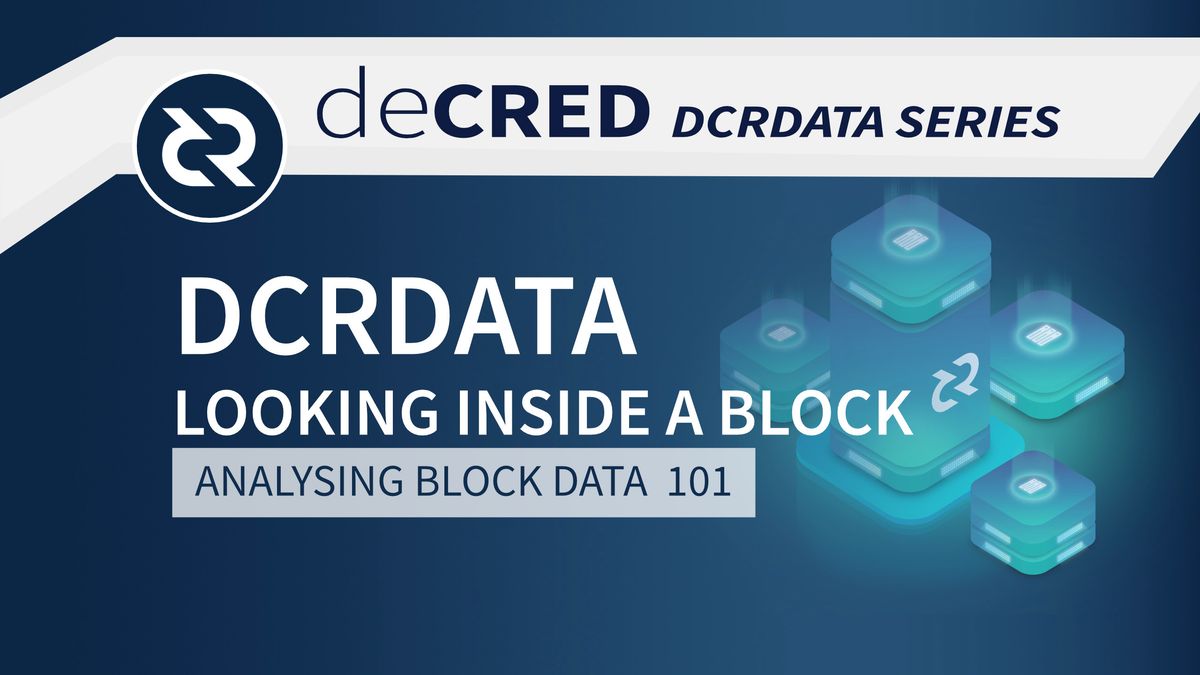
In the previous DCRDATA article, we looked at the overview page for Decred’s block explorer and the basic information for understanding if the project is working as expected. This time we’ll delve into an individual block and the data on offer. A staging point for this discussion is the open nature of on-chain transactions in comparison to the closed nature of traditional banking transactions.
By having no closed off values, all participates get the opportunity to make up their minds if Decred Is performing to their expectations before participating in the monetary system.
So let’s dive in and head back over to the DCRDATA overview page. By clicking on a block or transaction link, you will reveal a detailed look at what’s inside. Depending on how much digging you want to do, it's possible to go all the way back through the history of the chain. In the block link, you will find the block has two sections, the block header and the transaction area.
The Block Header
The first piece of data you’ll see in the block headed is the Block number, which shows the number of blocks chained together and the number of confirmations the block has. As, a block gets linked to newer blocks, it will gain more confirmations. In Decred, a block is irreversible once it reaches six confirmations. This is due to Decred’s chain lock rule, which prevents deep reorgs of the blockchain data.
On the right, you’ll see links to the previous and next blocks along with the api link. The API lets you examine the raw data from a block in its coded view.
Next is the block hash, which, in very basic terms, is a reference or validation number for a block in the blockchain. The block hash is the value found by the miner that created the block and must be verifiably linked to both the previous and the next block hash to be deemed as valid.

Then we have the block overview section, which includes:
- Total amount of DCR coins transacted and their current value in $
- How many DCR coins were privacy mixed
- The size of the block in kiloBites (kB), (Decred currently has a maximum block size of 393,216 bytes or 0.39 MB)
- The block time, which shows when the block was produced
- Then we have the transaction overview, which includes regular transactions, number of tickets that voted, tickets purchased and Ticket revocations, which are returned tickets that either missed their vote or expired without voting
In the last part of the block header we look at the block details which include:
- The price of a ticket purchased during the creation of this block
- The total fees for the block
- The ticket pool size at the time the block was produced
- The proof of work difficultly
- The software version for both POW and POS
- The final state, which is the the final state of the lottery selection process used to determine which tickets voted on the current block.
- The nonce, which is an abbreviation for "number only used once”. Refers to a solution that a blockchain miner needed to discover in order to produce a valid block.
- And The vote Bits, which has either a number value of 1 – Block was approved by proof-of-stake voters. Or a number value of 0 – Block was disapproved by proof-of-stake voters.
Along with this, you also have the Merkle Root and Stake Root. A Merkle root is a simple mathematical way to verify the data on a Merkle tree. Merkle roots are used in cryptocurrency to make sure data-blocks passed between peers on a peer-to-peer network are whole, undamaged, and unaltered.
The stake root field originally was used in the same way as the Merkle Root field except it only applied to all the stake-related transactions in the block, which includes ticket purchases, votes, and ticket revocations. However, as of DCP0005, the stake-related transactions are now included in the Merkle Root and the stake root field has been repurposed to provide mathematical proof that additional data over and above the transaction is unaltered. It currently includes compact filters which enable fast, efficient, and secure lightweight clients.
The Transaction Area
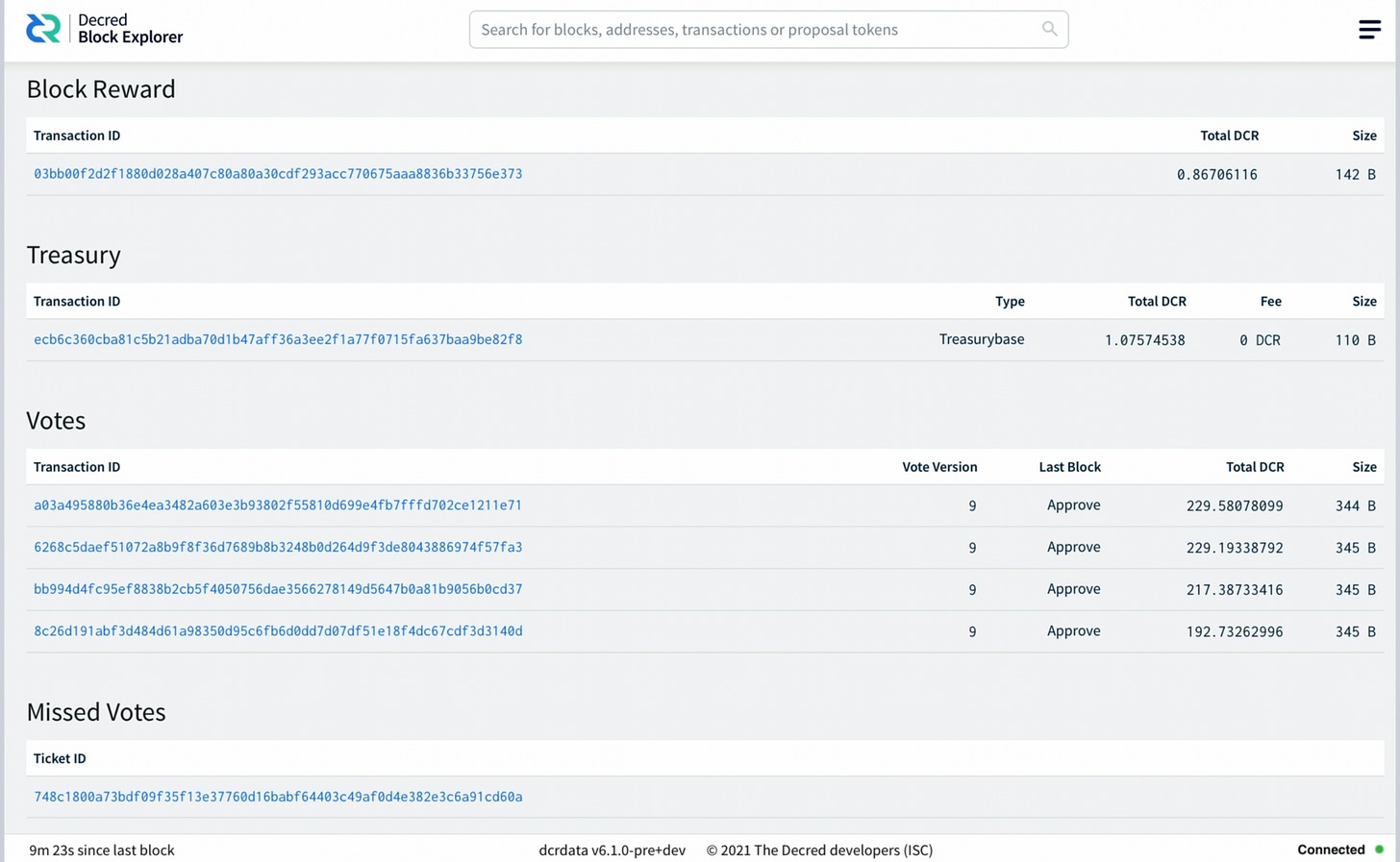
After, the block header, you get a breakdown of every type of transaction along with all the data surrounding that transaction. Typical transactions include:
- The block reward for the miner, including block fees
- The block reward for the treasury
- The five voting tickets which also get part of the block reward
- Missed Vote transactions
- Tickets purchase transactions
- Revocation transactions
- And then finally regular peer to peer transactions, which can also include mixing transactions.
When, you delve deeper into the transaction section, you start to realise the open nature of the blockchain. Every coin or atom, which is Decred’s lowest denomination, is accounted for, and every transaction is verifiable against the chain history and the supply.
Just imagine your bank revealing all of this data in real time for every transaction in a verifiably transparent way. Imagine if your bank or central bank was this accountable, and think of where it might lead?, it might lead to more honesty, it might lead to a fairer monetary system; it might lead to a system where anyone can participate, if they'd like to; it might lead to reducing the impact of centralised entities or cartels on our daily lives.
The block explorer is the root of what makes blockchains so incredibly innovative and revolutionary. It’s the eye-opening technology that makes you realise how broken and flawed a closed system is. It makes you question, who does a closed system benefit the most? Possible, those who control it or have the most to gain from its concealed nature. An open system, on the other hand, puts everyone in control on a level playing field and disadvantages dishonest behaviour.
In the next DCRDATA article, we’ll look at the charts that can be produced from all this wonderful block data.
If you liked this post, don’t forget to give it a like, comment and most importantly subscribe to the channel!


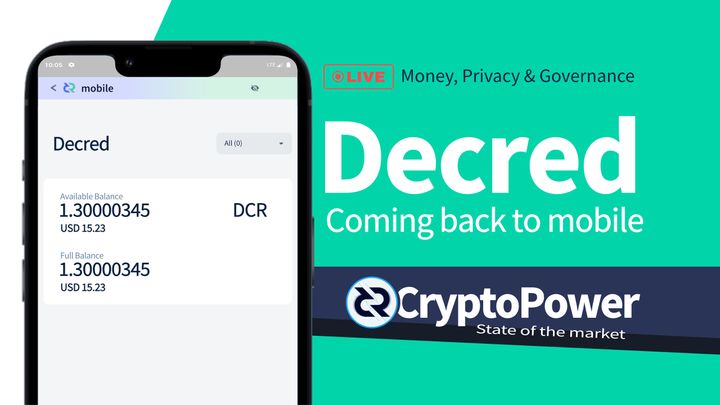
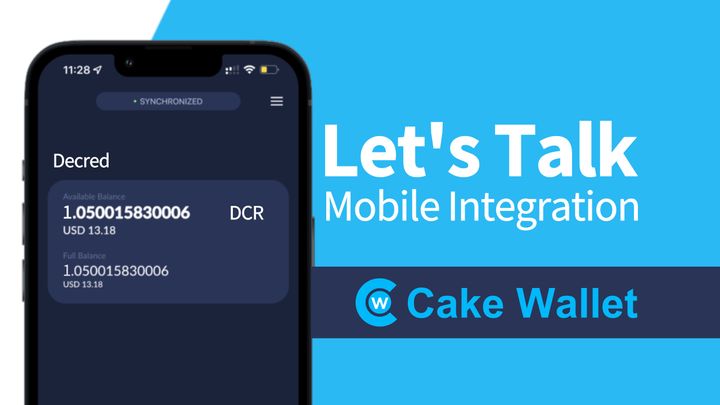
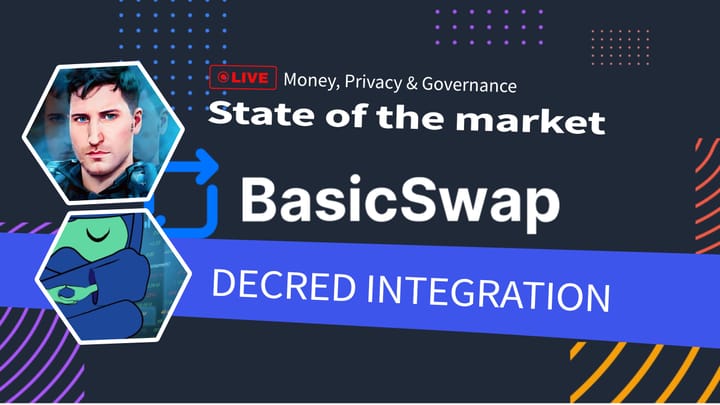
Comments ()